Rare and Large Glass Bead Picture of ‘Winter’ after the Ancient Romano Mosaic Floor of Bignor Sussex
A Rare and Large Glass Bead Picture of ‘Winter’ after the Ancient Romano Mosaic Floor of Bignor Sussex
England
Early 19th Century
Size: 76cm high, 64cm wide - 30 ins high, 25¼ ins wide / 81.5cm high, 69cm wide - 32 ins high, 27¼ ins wide (framed)
England
Early 19th Century
Size: 76cm high, 64cm wide - 30 ins high, 25¼ ins wide / 81.5cm high, 69cm wide - 32 ins high, 27¼ ins wide (framed)
A Rare and Large Glass Bead Picture of ‘Winter’ after the Ancient Romano Mosaic Floor of Bignor Sussex
England
Early 19th Century
Size: 76cm high, 64cm wide - 30 ins high, 25¼ ins wide / 81.5cm high, 69cm wide - 32 ins high, 27¼ ins wide (framed)
England
Early 19th Century
Size: 76cm high, 64cm wide - 30 ins high, 25¼ ins wide / 81.5cm high, 69cm wide - 32 ins high, 27¼ ins wide (framed)
Discovered in July 1811, nearby to both Arundel and Petworth, the 1st - 2nd century A.D Romano-British villa at Bignor was a major archaeological find on English soil. The ‘Ganymede’ mosaic pavement was discovered on July 18th, 1811 when the Bury field was being ploughed. Mr John Hawkins of Bignor Park took the excavation in hand and placed it under the supervision of Samuel Lysons, the leading antiquary of the day. Hawkins assisted by a farmer, Mr Tupper, the owner of the field, did nearly all the digging which lasted for eight years. The size and extent of the Villa together with the quality of the mosaic pavements must have been astonishing. The seven fine mosaic pavements found at Bignor Park rank in design and execution with the best found elsewhere in Britain, i.e. London, Silchester, Woodchester and Cirencester.
It is clear that in the middle of the 4th century A.D the villa was the home of a very prosperous merchant or dignitary who was able to provide himself with one of the largest country houses in Roman Britain and to decorate it with some of the costliest and finest mosaics in the province. In a room over 40 feet long was discovered a large mosaic pavement depicting the four seasons most of which had been destroyed by ash trees growing over it in the 18th century. The chief remaining object of interest was the head of ‘Winter’, in the appropriate North east corner, in an octagon of intersecting squares. The four seasons was a popular subject with the Roman designers and in the Conservatori Museum in Rome there is another large ancient pavement with a figure of ‘Winter’ that closely resembles the one at Bignor.
The powerfully drawn head and shoulders of the Bignor figure are covered with a British Celtic hooded cloak well known in the 3rd century A.D throughout the Roman Empire for its thickness and warmth. Mentioned in Diocletian’s edict of prices (A.D 301) it commanded a higher price than any other similar garment. The figure holds a bare bough over the left shoulder and the cold effect has been skilfully obtained by the use of the black, brown and blue grey tesserae of the figure on the white background. The decorative effect of this carefully constructed ‘bead glass’ replica is as striking and great as that of the original ancient mosaic. The reverse of the beadwork picture is visible in ‘mirror image’.
It is clear that in the middle of the 4th century A.D the villa was the home of a very prosperous merchant or dignitary who was able to provide himself with one of the largest country houses in Roman Britain and to decorate it with some of the costliest and finest mosaics in the province. In a room over 40 feet long was discovered a large mosaic pavement depicting the four seasons most of which had been destroyed by ash trees growing over it in the 18th century. The chief remaining object of interest was the head of ‘Winter’, in the appropriate North east corner, in an octagon of intersecting squares. The four seasons was a popular subject with the Roman designers and in the Conservatori Museum in Rome there is another large ancient pavement with a figure of ‘Winter’ that closely resembles the one at Bignor.
The powerfully drawn head and shoulders of the Bignor figure are covered with a British Celtic hooded cloak well known in the 3rd century A.D throughout the Roman Empire for its thickness and warmth. Mentioned in Diocletian’s edict of prices (A.D 301) it commanded a higher price than any other similar garment. The figure holds a bare bough over the left shoulder and the cold effect has been skilfully obtained by the use of the black, brown and blue grey tesserae of the figure on the white background. The decorative effect of this carefully constructed ‘bead glass’ replica is as striking and great as that of the original ancient mosaic. The reverse of the beadwork picture is visible in ‘mirror image’.
Ex Private English collection
cf For a Regency ‘after the antique’ glass mosaic of ‘winter’ a copy of the original mosaic floor found at Bignor see Finch and Co catalogue number 19, item number 84
cf For a Regency ‘after the antique’ glass mosaic of ‘winter’ a copy of the original mosaic floor found at Bignor see Finch and Co catalogue number 19, item number 84
Rare and Large Glass Bead Picture of ‘Winter’ after the Ancient Romano Mosaic Floor of Bignor Sussex
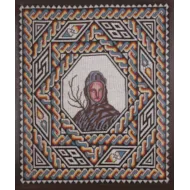
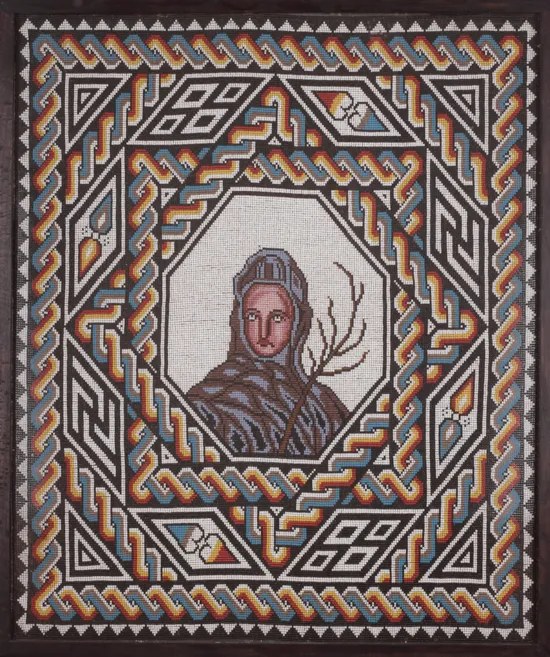
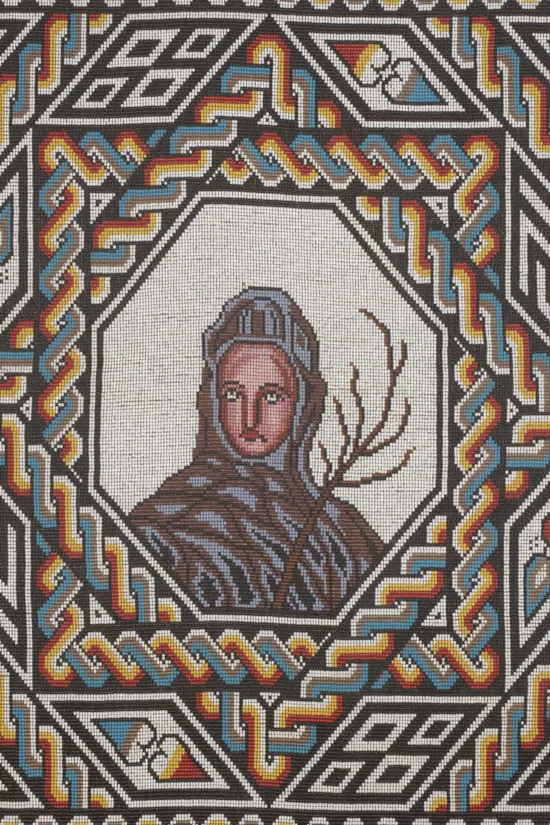
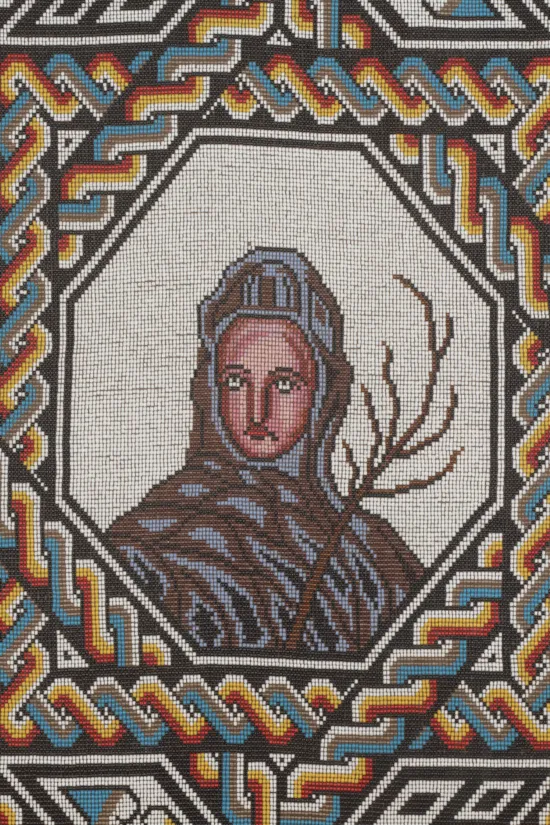
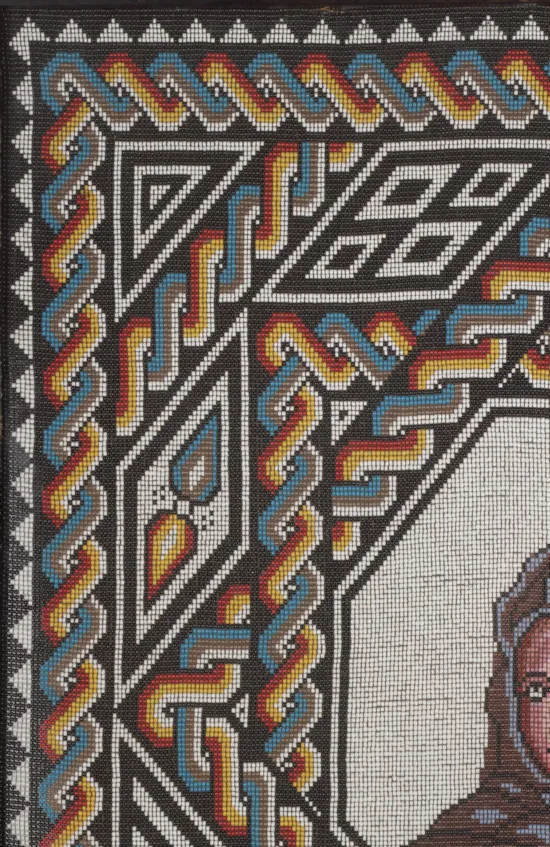
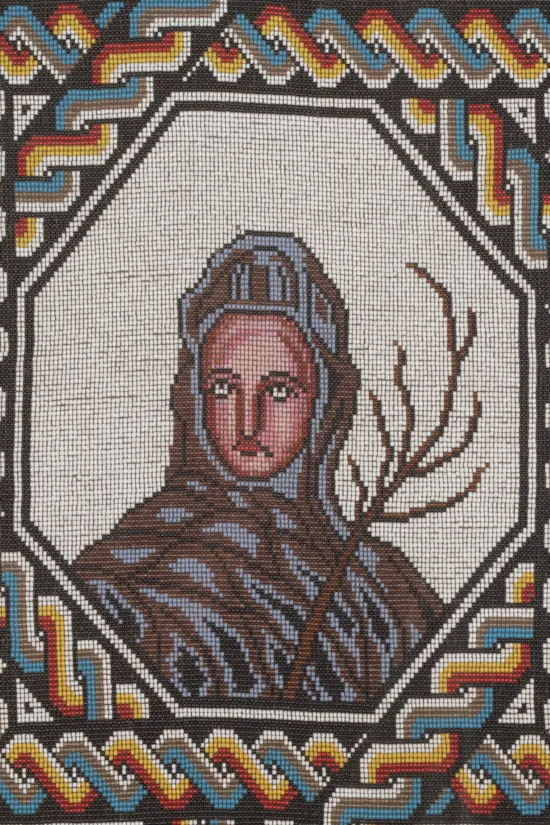
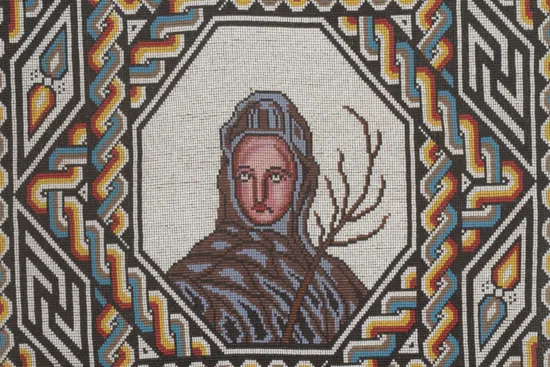
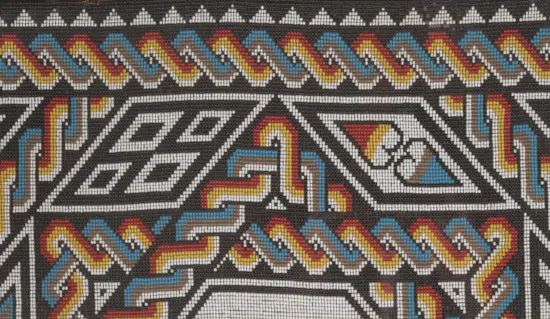







YOU MAY ALSO LIKE



